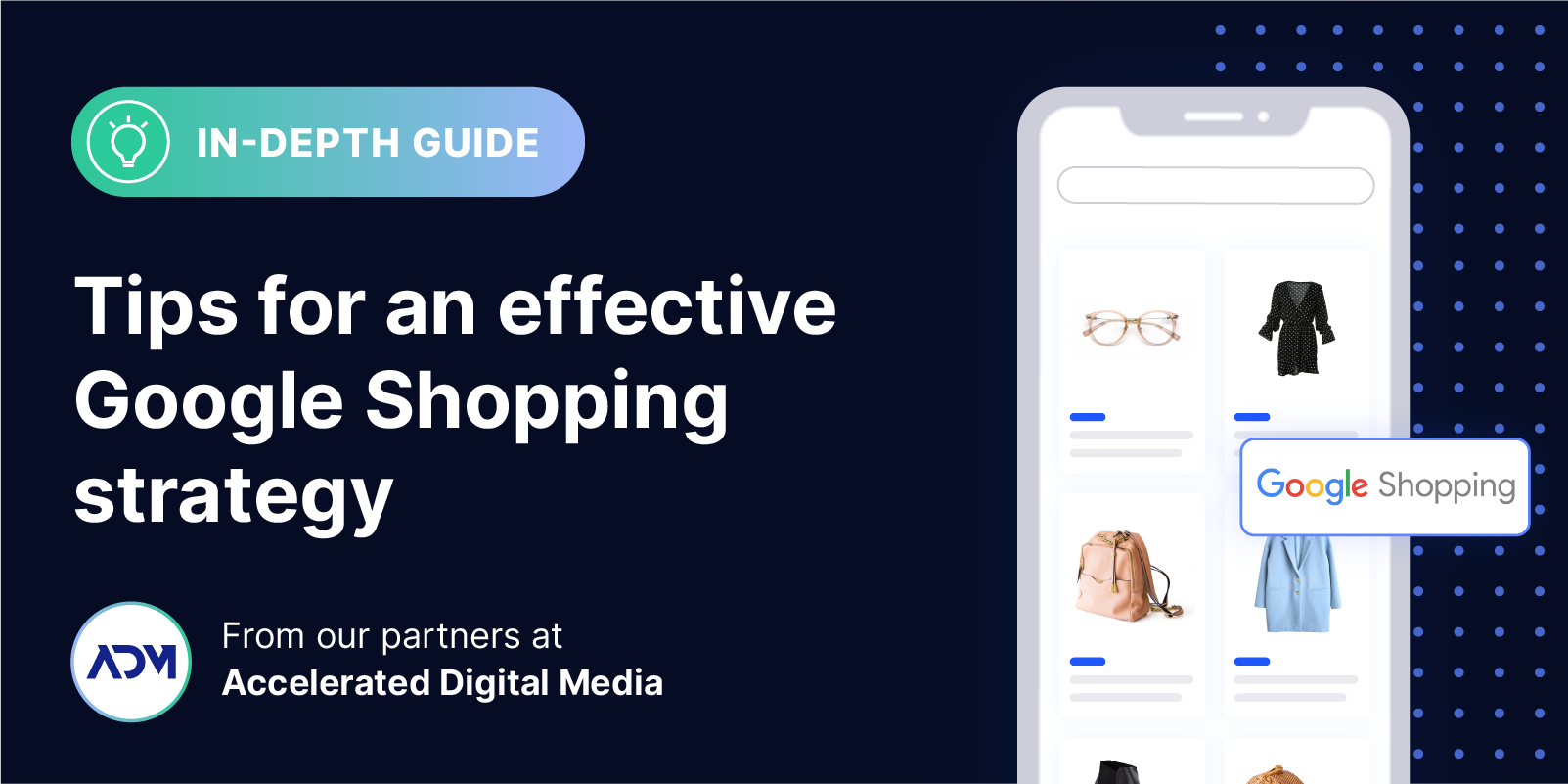For ecommerce companies, there are few digital marketing tools more valuable than product listing ads (PLAs), also called Shopping ads. As Google’s search engine results page (SERP) becomes increasingly crowded with image and video integrations, SEO clickbait, and generative AI tools, these ads are only becoming more valuable.
Search ads often only have 2-4 slots to appear in the first few scrolls, while the Shopping field usually sits atop the page and has space for up to nine ads on desktop in a single search result. Shopping ads allow companies to make an immediate, direct pitch to high-intent users by placing item photos, prices, promotions, and other selling points right at the top of the SERP for relevant queries.
Google has offered a few different ways to deploy PLAs over the years. Today, these ads can be delivered through standard Shopping campaigns and Performance Max—an AI-powered, multi-format campaign type that rolled out in 2021 and formally replaced Smart Shopping campaigns in 2023.
To deploy Shopping ads through either campaign type, you need to start with a well-built, validated product feed. After that, choosing between the two and finding ways to maximize their efficiency depends on unique business factors—which we’ll detail in this blog.
The difference between Standard Shopping campaigns and Performance Max campaigns
Shopping campaigns are the traditional option: a tried-and-true staple of ecommerce advertising on Google Ads. These function in a simpler fashion, in that the campaigns are only serving a single ad type—like Search campaigns. The results are populated based on data from your Shopping feed, and advertisers can use negative keywords to steer their ads away from low-intent searches.
Performance Max campaigns aim much wider, but offer less control. Rather than being limited to a single ad format with manual bids dictating their likelihood of appearing, these campaigns can showcase your inventory across the entire Google ecosystem, including Google Shopping, Search, Display, YouTube, Discover, and other locations. Because of this, they can work as both prospecting and remarketing campaigns at the same time, meaning they address users across each stage of your funnel.
While it’s valuable to add additional assets to your Performance Max campaigns, many of these ads are populated entirely from information in your product feeds.
As a performance marketing agency, ADM has grown to love Performance Max for more than just the name: These campaigns have proven highly-effective across our client accounts. That said, the reason for their success is one of their complicating factors. These campaigns rely heavily on AI to decide what type of ad to show, and to whom. That creates a bit of a black box effect, where you might see great results yet not know precisely why, which can make them harder to granularly optimize.
Choosing between Shopping and Performance Max
Because of their effectiveness across the entire sales funnel, ADM considers Performance Max the first-choice campaign type for ecommerce brands. However, that doesn’t mean that standard Shopping campaigns lack their utility.
The main reason you would want to select a standard Shopping campaign over Performance Max is that you’re only interested in competing for that Shopping real estate, for any number of budgetary or strategic reasons. For instance, Shopping campaigns are great if you’re confident in your brand awareness and don’t need to focus anywhere but the bottom of the funnel, or if you’re advertising a product that lends itself to quick impulse purchases.
There are also account-wide considerations. Performance Max is designed to rely on its AI inferences while avoiding redundancy. If a Search campaign in your account contains certain Exact Match keywords, the Performance Max campaign will not compete for those keywords and instead let Search have them.
However, if your account doesn’t contain a robust set of Exact Match keywords, it can lead Performance Max to devote more of its budget to search results and limit its Shopping appearances. That might call for some adjustments to your Search strategy or just the use of Shopping in place of Performance Max.
There’s room to have both Shopping and Performance Max campaigns in your account if each is there for a well-defined purpose. A company solely focused on new customer acquisition could use the Brand Exclusion feature in Performance Max, but create a separate Shopping campaign with all non-brand keywords excluded via negative keyword lists. That would force the Shopping campaign to only show when a user is searching for something brand-specific. That way, you’re getting the absolute most out of your product feed by letting Shopping handle familiar audiences while Performance Max works new prospects down the sales funnel.
Good testing habits for Shopping ads
It’s a good habit to run frequent tests on your Shopping strategy. This encourages continual optimization and helps you monitor whether Shopping ads are fulfilling their purpose within your account. Since true A/B tests aren’t possible, brands should run pre/post experiments while isolating variables like titles, descriptions, or imagery. Here are some examples of tests that can inform both your feed data and your campaign performance.
Test 1: Title and description optimization
Testing adjustments to product titles and/or descriptions can function the way an ad copy test does in a Search campaign. Testing new information—like more descriptive language, additional value propositions, or even specific product use-cases—may not only enhance performance, but also help the products appear for a broader range of search queries.
Test 2: Lifestyle versus product imagery
This test compares lifestyle imagery (products in context) with product photography (items alone) to see what performs better on Google Shopping ads. It helps creative teams make informed artistic decisions and can inspire further creative testing across different channels. Run this test regularly to adapt to changing user preferences and improve click-through rate.
Test 3: Title order
Even seemingly-minute ordering details are worth checking. Brands often start titles with their names to dominate branded search queries, but an unintended consequence of this is that it may hinder non-branded search engagement. Moving the brand name to the end of the title increases the likelihood that a searcher’s first impression will come from value-building language or specific product details. That simple tweak may improve non-branded search ranking and clicks. This test can also inform how you understand performance among new versus returning customers. An increase in new customers after de-prioritizing the brand name could indicate a stronger likelihood of better performance in non-branded search results.
Getting more insights from Performance Max
While many of the same A/B tests can be applied to both Shopping campaigns and Performance Max, they’re more straightforward for Shopping ads. That’s because the results in the Shopping campaign tests only reflect results from PLA ads, without possible dilution from the Search, Display, and other formats that also use your Performance Max budget.
But expert marketers can overcome that. Google Ads allows you to deploy reporting scripts in your account, and it’s possible to upload custom scripts to output deeper insights than what the platform displays by default.
At ADM, we use specific scripts to understand things like what percentage of Performance Max spend is going to each ad format and how each one is performing. Armed with this information, we can make important optimizations not just within those Performance Max campaigns, but also to the other campaigns working in tandem with them throughout the account.
From beginning to end, good marketing is all about good data. A well-structured product feed can serve as the foundation for a successful Search account and can support a myriad of successful campaigns and campaign types as you build out your marketing mix. Combining that strong foundation with a commitment to testing and optimizing keeps your Google Ads account growing on the right path.
Accelerated Digital Media (ADM) is a performance marketing agency focused on helping ecommerce and healthcare brands reach the next phase of their growth. We build custom marketing strategies that blend SEM, paid social, and programmatic advertising techniques to achieve each client’s unique business goals. To find out how we approach marketing differently and find new growth opportunities for our clients, don’t hesitate to reach out to the ADM team.

